DATASHEET
POWDERRANGE® M300
Associated specifications: AMS6514, AMS6521, AMS6463, AMS-S-46850,
SAE J1099 (A538C), MIL-S-46850, UNS K93120, K93130, K93160

Type analysis
Single figures are nominal except where noted.
| Iron | Balance |
| Molybdenum | 4.50–5.20 % |
| Manganese | 0.15 % |
| Carbon | 0.030 % |
| Nickel | 17.0–19.0 % |
| Titanium | 0.80–1.20 % |
| Oxygen | 0.10 % |
| Phosphorous | 0.010 % |
| Cobalt | 8.50–10.0 % |
| Chromium | 0.25 % |
| Silicon | 0.10 % |
| Sulfur | 0.010 % |
Description
PowderRange® M300 is an age hardenable martensitic tool steel with exceptional mechanical properties, specifically a high tensile strength and hardness. It is easily heat treated with superior mechanical properties being achieved after age hardening. The high carbon tool steels such as H13 or M2, which are typically used in tooling and molding applications, are very difficult to process by conventional Laser Powder Bed Fusion. PowderRange® M300 offers a comparable alternative in terms of mechanical properties, but with proven additive manufacturing suitability. PowderRange® M300 maintains strict control over residual alloying elements to optimize for additive manufacturing.
Key Properties
- Exceptional strength
- Heat resistant to 900°F
- High hardness and wear resistance
Markets
Applications:
- Tool inserts for molding and casting
- Tire sipes and molds
- Hard-wearing functional components
Powder properties
| Part Number | PowderRange® M300 F | PowderRange® M300 E |
| Application | L-PBF1 | EB-PBF or DED(1) |
| Maximum Particle Size | Max 1 wt% > 53 µm2 | Max 10 wt% > 106 μm(2) |
| Minimum Particle Size | Max 10 vol% < 15 µm3 | Max 10 wt% < 45 μm(2) |
| LSD Percentile | D10, D50, D903, reported | |
| Atomization | Nitrogen Gas Atomized | |
| Apparent Density (G/CM3) | Measured according to ASTM B2124 and reported | |
| Hall Flow (S/50G) | Measured according to ASTM B2135 and reported |
1ASTM/ISO 52900: Laser—Powder Bed Fusion (L-PBF), Electron-Beam Powder Bed Fusion (EB-PBF), Directed Energy Deposition (DED)
2ASTM B214 Standard Test Method for Sieve Analysis for Metal Powders
3 ASTM B822 Standard Test Method for Particle Size Distribution of Metal Powders and Related Compounds by Light Scattering
4 ASTM B212 Standard Test Method for Apparent Density of Free-Flowing Metal Powders Using the Hall Flowmeter Funnel
5 ASTM B213 Standard Test Method for Flow Rate of Metal Powders Using the Hall Flowmeter Funnel
Testing of powder will fulfill certification requirements to Nadcap Materials Testing and ISO/IEC 17025 Chemical, per relevant ASTM procedures
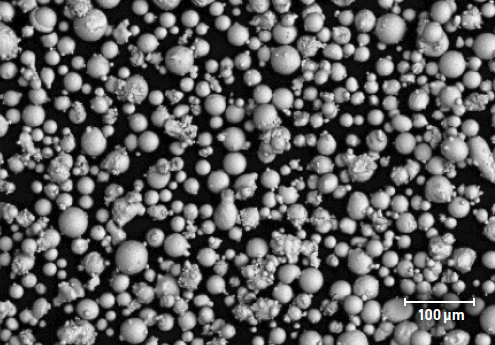
FIGURE 1—SEM IMAGE OF TYPICAL PowderRange M300 POWDER
Additive manufacturing process guidance
ASTM/ISO 52900: LASER-POWDER BED FUSION (L-PBF)
Laser-Powder Bed Fusion(L-PBF) As-built
PowderRange M300 is compatible with all commercially available L-PBF equipment.
To achieve mean, as-built density >99.9%, 20 to 60 μm layer thicknesses and Specific Energy ≥ 65 J/mm3 is recommended.
Stress Relief,Solution Anneal and Age(SR/Sol/Age)
PowderRange M300 is typically stress relieved and solution annealed simultaneously following L-PBF. Annealing and solution treating are performed simultaneously by heating to 1500-1600°F (816-870°C) for a minimum of 30 minutes at temperature, followed by air cooling to room temperature.
Following Solution Annealing, PowderRange M300 is typically aged at 900°F (482°C) for a minimum of 3 hours followed by air cooling.
Schedules tailored better to the AM process thermal history may be available. Please contact Carpenter Technology for information.
Hot IsostaticPressed condition(HIP/Sol/Age)
We recommend HIP as standard practice for microstructure homogenization; removal of residual spatter-induced voids, trapped gas porosity in powder and keyhole porosities; as well as to heal any shrinkage-induced micro-cracks in the material.
To achieve up to full density (100%): Process components under inert atmosphere at not less than 14.5 ksi (100 MPa) at approximately 2050°F (1220°C); hold at the selected temperature for approximately 240 minutes or more.
Follow with Solution and Age treatment as described above.
Machinability
PowderRange M300 is readily machined in the Solution Annealed condition (see above). Limited machining can be performed in the fully treated condition. Annealed hardness is typically 30 Rc.
TYPICAL MICROSTRUCTURES
CONDITION
TRANSVERSE (X-Y PLANE)
LONGITUDINAL (Y-Z PLANE)
NOTES
As-built
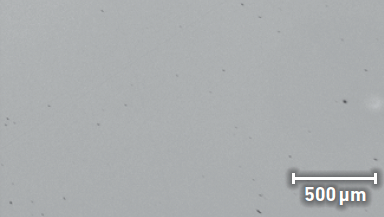
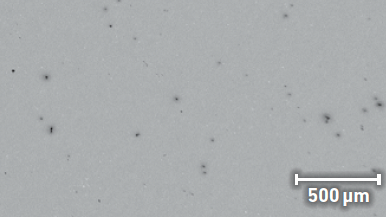
Mean densities greater than 99.8%
HIP/Sol
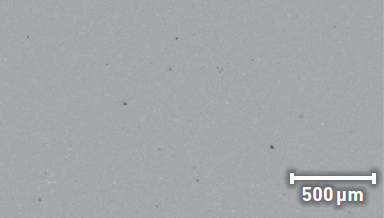
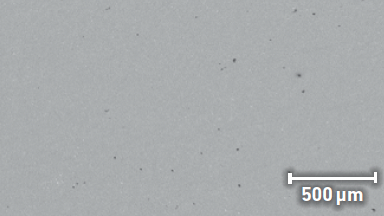
Mean densities up to 100%
As-built, etched6
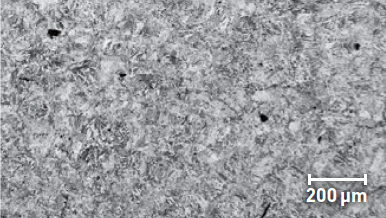
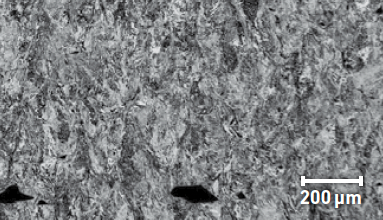
Lath martensite microstructure
Minimal spatter porosity
Some evidence of weld lines
visible
Sol/Age, etched(6)
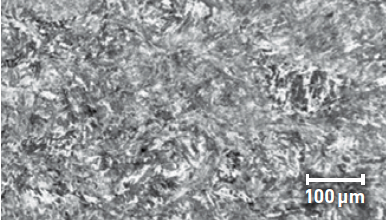
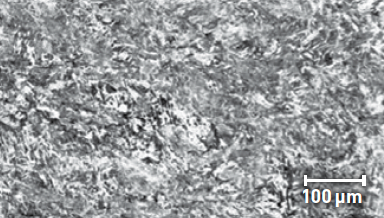
Recrystallized equiaxed grain structure minimizes anisotropy
HIP/Sol/ Age, etched6
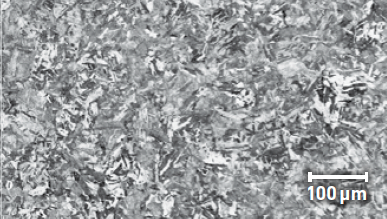
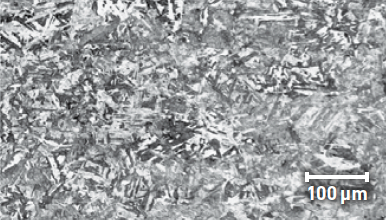
Lath martensite microstructure
6 Etched with Ralph’s etchant
Typical achievable mechanical properties

7Average of a minimum of 5 samples taken from across the extents of a build plate in each orientation and for each heat treatment. Testing performed in accordance with ASTM E8/E8M-16a (tensile), ASTM E23-18 (impact energy) and ASTM E18-19 (hardness). Additional data may be available through a wide range of consortia and other collaborations. Please contact Carpenter Additive for additional information.
8 Forged Bar: https://www.carpentertechnology.com/en/product-solutions/cartech-nimark-alloy-300/#
Corrosion resistance
IMPORTANT NOTE: The following 4-level rating scale (Excellent, Good, Moderate, Restricted) is intended for comparative purposes only and is derived from experiences with wrought product. Additive manufactured material may perform differently; corrosion testing is recommended. Factors that affect corrosion resistance include temperature, concentration, pH, impurities, aeration, velocity, crevices, deposits, metallurgical condition, stress, surface finish, and dissimilar metal contact.
Corrosion resistance of PowderRange® M300 is limited. To discuss high strength, stainless steel alloy options please contact Carpenter Additive.
| Humidity | Restricted |
Similar materials
| Company |
| Other Generic Names |
| 3D Systems |
| GE Additive (Concept Laser) |
| EOS |
| DMG Mori (Realizer) |
| Renishaw |
| SLM Solutions |
| Alternative Title |
| Maraging Steel, ISO X3NiCoMo-Ti18-9-5 |
| LaserForm Maraging Steel |
| M300 |
| ToolSteel 1.2709 |
| – |
| 1.2709 |
| 1.2709 |
For additional information, please
contact your nearest sales office:
The mechanical and physical properties of any additively-manufactured
material are strongly dependent on the processing conditions used to
produce the final part. Significantly differing properties can be obtained by
utilizing different equipment, different process parameters, different build
rates and different geometries. The properties listed are intended as a
guide only and should not be used as design data.
The information and data presented herein are typical or average values
and are not a guarantee of maximum or minimum values. Applications
specifically suggested for material described herein are made solely for the
purpose of illustration to enable the reader to make his/her own evaluation
and are not intended as warranties, either express or implied, of fitness for
these or other purposes. There is no representation that the recipient of
this literature will receive updated editions as they become available.
Unless otherwise specified, registered trademarks are property of
CRS Holdings Inc., a subsidiary of Carpenter Technology Corporation.

